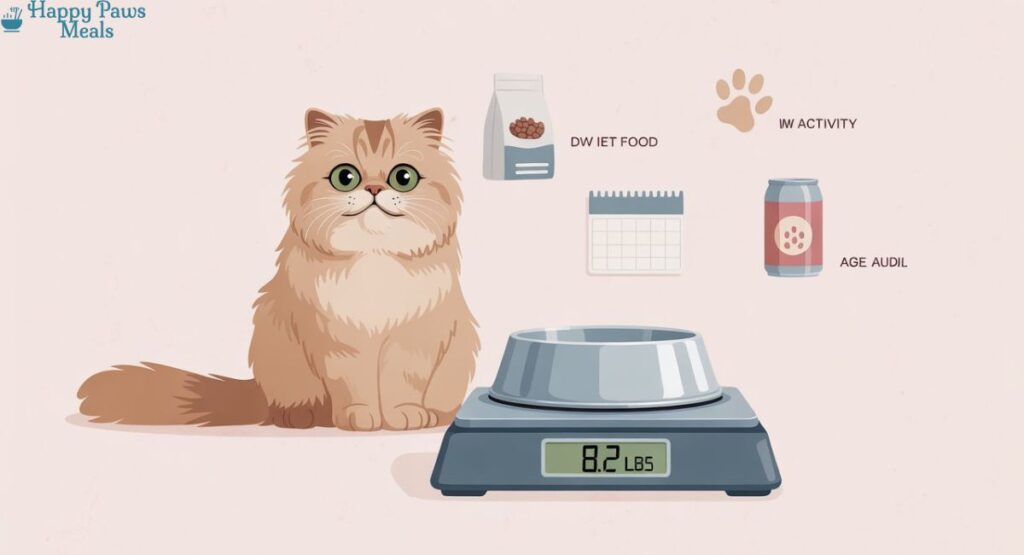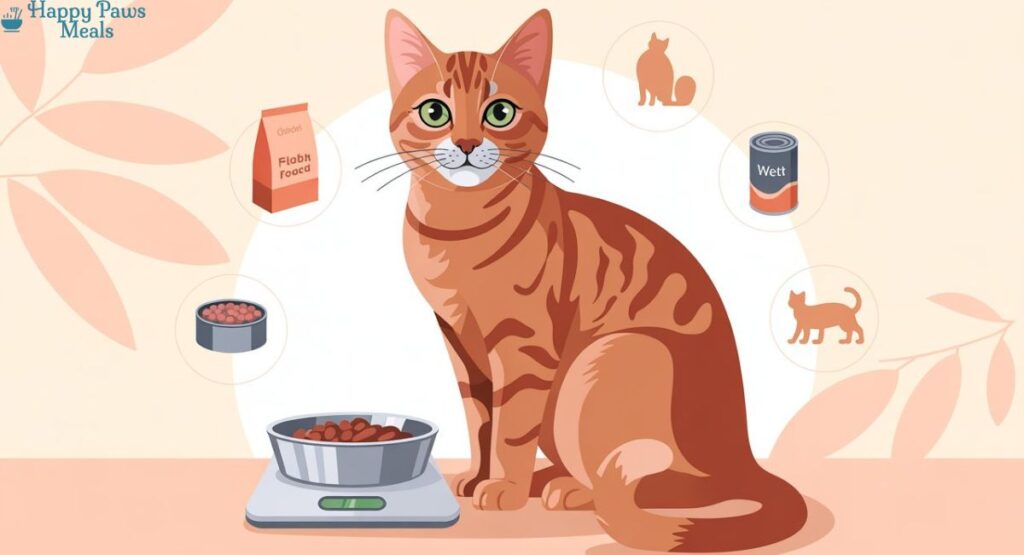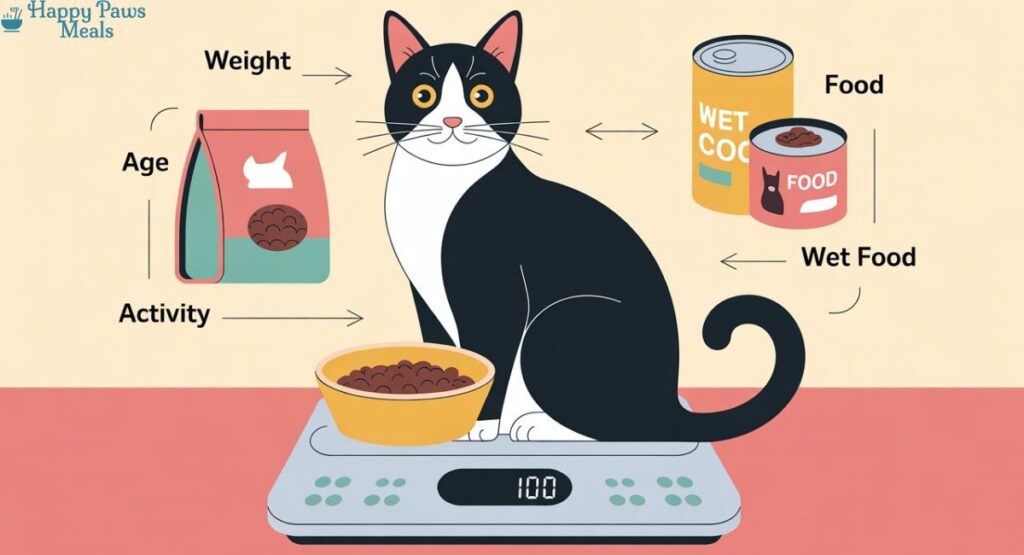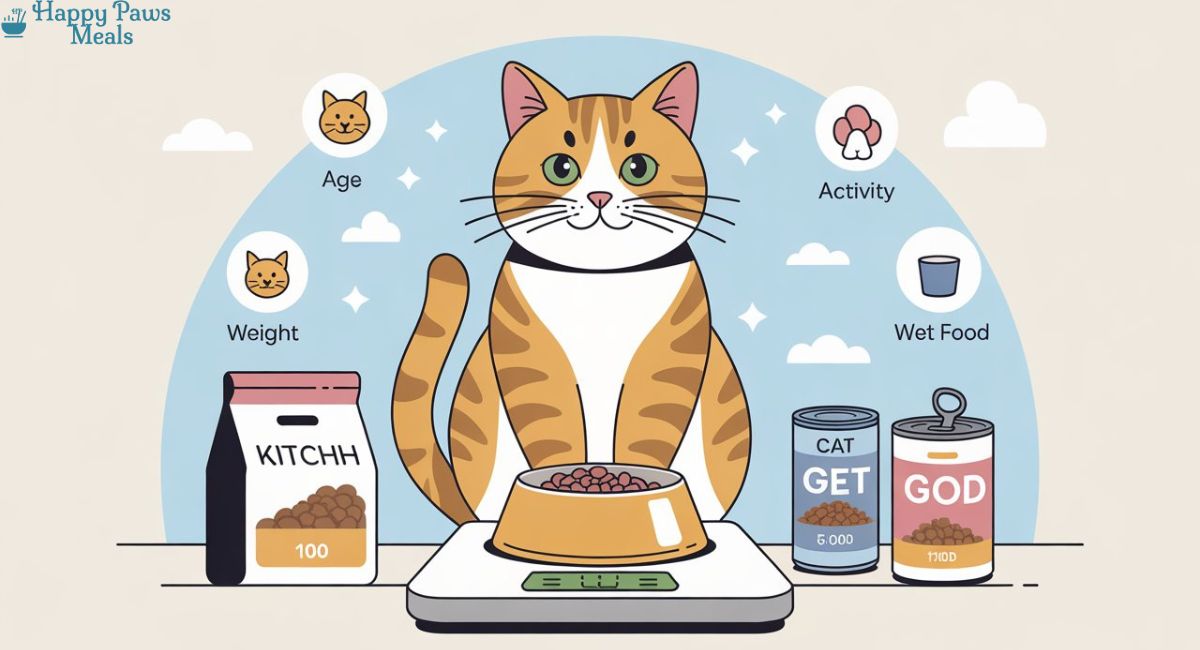Feeding your cat might look simple—pour some kibble in a bowl, refill when empty, and you’re done. But in reality, it’s not that straightforward. Many cat owners unintentionally overfeed or underfeed, and both mistakes can lead to health problems. Studies show that more than half of domestic cats are overweight, while others don’t get enough nutrients for healthy growth and energy.
This is where a cat food calculator becomes an essential tool. Instead of guessing how much food your cat needs, a calculator gives you a personalized feeding plan based on weight, age, lifestyle, and food type. Whether you feed dry, wet, or raw, it removes the guesswork and replaces it with science-backed accuracy.

In this article, we’ll break down how cat food calculators work, why they matter, and how to use them for kittens, adults, seniors, and even cats with special health needs. We’ll also share expert feeding tips and answer common questions. By the end, you’ll understand why a calculator isn’t just a convenience—it’s a long-term health strategy for your cat.
👉 Looking for brand suggestions? Don’t miss our review of Chewy Cat Food: Best Picks for Healthy & Happy Cats in 2026.
Why Cats Need Precise Portion Control
Cats are obligate carnivores, meaning their diet must be rich in protein and fat while keeping carbs to a minimum. Unlike dogs, cats have a lower tolerance for dietary mistakes, and even small imbalances in food portions can have major effects.
Cats are obligate carnivores, meaning their diet must be rich in protein and fat while keeping carbs to a minimum. Unlike dogs, cats have a lower tolerance for dietary mistakes, and even small imbalances in food portions can have major effects (AAFCO Guidelines).
Dangers of Overfeeding
- Obesity – the most common nutrition-related issue in cats. Leads to diabetes, heart strain, liver disease, and arthritis.
- Shortened lifespan – overweight cats statistically live fewer years.
- Reduced mobility – extra weight makes it hard to jump, play, or groom.
Dangers of Underfeeding
- Malnutrition – too little food means cats don’t get essential amino acids like taurine.
- Weak immunity – underfed cats catch infections easily.
- Stunted growth – kittens fed too little may not reach full development.
👉 The solution? Controlled feeding with the help of a cat food calculator.
How a Cat Food Calculator Works
Every cat food calculator is based on a simple principle: energy in must match energy needs. Too much energy (calories) causes weight gain, and too little causes weakness.
Step 1: Calculate Resting Energy Requirement (RER)
This formula estimates how many calories your cat needs at rest: RER=70×(body weight in kg)0.75RER = 70 \times (body\ weight\ in\ kg)^{0.75}RER=70×(body weight in kg)0.75
Example: A 5 kg cat → RER = 234 calories/day.
Step 2: Adjust with Multipliers for Lifestyle & Life Stage
- Kittens: RER × 2.0–2.5
- Adult indoor cats: RER × 1.2–1.4
- Active/outdoor cats: RER × 1.6–2.0
- Seniors: RER × 1.0–1.2
- Weight loss: RER × 0.8
- Pregnant/nursing cats: RER × 2–3
Step 3: Convert Calories into Food Portions
Check your food packaging (kcal per cup, per can, or per gram). Divide your cat’s daily calorie needs by this number.
Example: If your cat needs 280 kcal/day and the food contains 350 kcal per cup → 0.8 cups/day.
Real-Life Cat Food Calculator Examples
- Kitten (fast growth)
- Weight: 2 kg
- RER = 118 kcal
- Multiplier: ×2.5 = 295 kcal/day
- If wet food = 90 kcal/can → 3.2 cans/day
- Indoor adult cat
- Weight: 4.5 kg
- RER = 210 kcal
- Multiplier: ×1.3 = 273 kcal/day
- If kibble = 320 kcal/cup → 0.85 cups/day
- Overweight cat (weight loss plan)
- Current weight: 7 kg
- Target weight: 5.5 kg
- RER (based on target weight): 250 kcal
- Multiplier: ×0.8 = 200 kcal/day
- If food = 350 kcal/cup → 0.57 cups/day
Why Food Labels Are Misleading
Almost every bag or can of cat food has feeding guidelines, but they are not personalized.
- They assume all cats of the same weight need the same calories.
- Companies often recommend higher amounts so food runs out faster.
- They don’t consider neutering, lifestyle, or age.
👉 That’s why a cat food calculator gives better results—it’s tailored to your cat, not the “average” cat.

Cat Food Calculator for Different Diets
Dry Food (Kibble)
- High calorie density
- Easy to overfeed
- Must be carefully measured with a cup or kitchen scale
Wet Food (Canned)
- Lower in calories per gram
- Helps hydration
- Easier to portion (cans = fixed calorie amounts)
Raw Diets
- Requires calorie charts for each protein (chicken, beef, fish, etc.)
- Needs strict portion control to avoid deficiencies
Mixed Feeding (Wet + Dry)
- Many owners mix both.
- A calculator helps split daily calories correctly (e.g., 70% wet, 30% dry).
Vet-Approved Feeding Tips
- Measure food with a cup or scale—not by eye.
- Recheck your cat’s weight every 2–4 weeks.
- Limit treats to under 10% of daily calories.
- Divide meals into 2–3 feedings per day.
- Provide fresh water always (cats often ignore bowls—try fountains).
Common Mistakes Owners Make Without a Calculator
- Free-feeding (leaving food out all day).
- Overlooking calories in treats.
- Feeding by “sight” instead of measurement.
- Not adjusting as cats age or change weight.
- Switching brands without recalculating calories.

Special Scenarios Where a Calculator Helps Most
- Multi-cat households – each cat has different needs.
- Pregnant/nursing cats – require double or triple calories.
- Obese cats – gradual, safe weight loss.
- Diabetic cats – stable, portioned meals prevent glucose spikes.
- Very active cats – outdoor hunters need higher energy intake.
FAQs About Cat Food Calculators
Q1. Can I use the same calculator for kittens and adults?
No—kittens need double to triple calories compared to adults.
Q2. Should I weigh my cat regularly?
Yes—monthly weigh-ins help you adjust portions early.
Q3. Can I use it for raw diets?
Yes, but you must know the calorie values of raw meats.
Q4. Do indoor cats need fewer calories?
Absolutely. Indoor cats are less active and gain weight faster.
Q5. What if my cat begs for food?
Begging is often boredom. Try toys or play instead of extra food.
Final Thoughts
The cat food calculator is not just a tool—it’s a long-term health plan. By portioning food accurately, you protect your cat from obesity, malnutrition, and preventable diseases.
Whether you have a playful kitten, a laid-back indoor cat, or a senior who needs special care, using a calculator ensures every meal supports their health and happiness.
👉 Stop guessing. Use a cat food calculator today—and give your feline friend the right balance of nutrition and love.

I’m Awais Manzoor, the writer behind HappyPawsMeals. With years of interest in pet care and nutrition, I research and review cat and dog food to provide reliable, easy-to-understand advice for pet parents.

